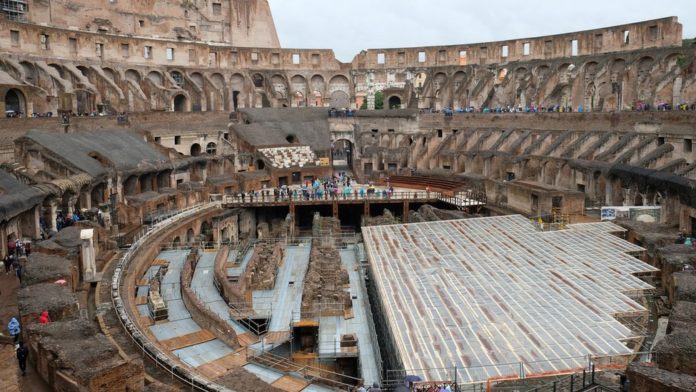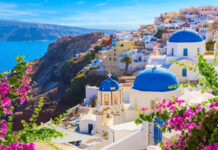Colosseum is undoubtedly an architectural marvel. Largest of all amphitheatres, it stands proudly in the heart of Rome. It still holds its pricelessness and remains as the metaphor of Rome, even after two millenniums. It is mainly because it holds a profound history, a history of gladiators. The construction of Colosseum began at the time of Vespasian, the founder of Flavian dynasty and was completed by his successor Titus a year after his reign. It was made of travertine limestone, tuff and concrete. The Colosseum could support as much audience as eighty thousand.
Emperor Vespasian chose a flat area on a low valley as the site for constructing the Colosseum. Before that it was the ‘Domus Aurea’, built by the infamous Nero for his personal requirements, that was situated there. The spoils from the ancient Jewish Temple had also been taken to construct the amphitheatre. The construction was funded from the wealth they have looted after the First Jewish-Roman war. Other than engineers, architects and labourers, there were also the efforts from professional artists, painters and decorators that enhanced its beauty.
The etymology of its name is still not completely known. The archaeologists have made a number of assumptions regarding this topic. They had assumed it was originally called as ‘Amphitheatrum’ as it is the Latin name of amphitheatre or ‘Amphitheatrum Flavium’ with reference to the Flavian dynasty. But history has not provided any evidence of the usage of this title in the Classical Antiquity which is between 8th century BC and 6th century AD. During this period, they believe it to be called as ‘Amphitheatrum Caesareum’ with reference to Julius Caeser. The name Colosseum is believed to have started using in the Late Antiquity. It has been originated from the word ‘colosseus’ meaning ‘gigantic’.
Gladiator battles were the most celebrated events that took place in the Colosseum. These shows were often called as ‘munera’. A gladiator was an armed combatant who had violent confrontations with other gladiators to entertain the audience. The schools of gladiators were constructed near the former grounds of Domus Aurea. They were mostly scorned as slaves and also socially marginalised. The gladiator games reached its peak during the 1st and 2nd century AD. The practice had gradually declined during the 5th century AD.
Another popular game that had been taking place in the Colosseum was ‘Venatio’. This involved men fighting with animals similar to what happens in a ‘Spanish Bullfighting’. Lions, tigers, wild goats, bears, wild boars, crocodiles, leopards, dogs and many animals were important from Middle east and Africa to serve this purpose.
Gladiator battles and Venatios were not the only programmes that had been taking place in the Colosseum. There were public spectacles and mock sea battles. The hypogeum or the space below the stage was facilitated in such a way to support these activities. By the 6th century a chapel was built into the structure of amphitheatre and it got converted into a cemetery. In the medieval period it was used as a church. The space under the seating of the Colosseum were converted into workshops. In the beginning of the 13th century, it was fortified by the Frangipani family.
The building got damaged mainly due to an earthquake in AD 1349. The spoils of the amphitheatre have been taken to be incorporated into new art objects. A major part of the Colosseum got damaged by a fire that occurred in AD 217. Pope Pius VIII in the 1990s had made notable efforts to preserve the Colosseum. A restoration project was undertaken in the 1990s. Italy’s Ministry for Cultural Heritage and Activities had announced an invitation for tender for the conservation and the restoration of the hypogeum of the Colosseum and bring back it its glory. The government of Italy had also tried to protect it from terrorist attacks. The Colosseum was surrounded by metal barriers and officers were assigned to cordon around it.
It is listed in the ‘New 7 wonders of the world’ and also has the biggest tourist attraction in Rome. It is having a close linking with the Roman Catholic. It also holds a remarkable significance in Christianity. Each Good Friday the Pope Benedict XVI leads a torchlit ‘Way of the Cross’ procession that starts in the area around the Colosseum. It is also called the ‘Stations of the Cross’ or the ‘Scriptural way of the Cross’. For last two millenniums, the colosseum has entertained people and served them as venue for many activities. Hope this architectural marvel is preserved throughout and stand as an inspiration for all architects and as a masterpiece of architecture.
By Siddharth J
Write and Win: Participate in Creative writing Contest & International Essay Contest and win
















